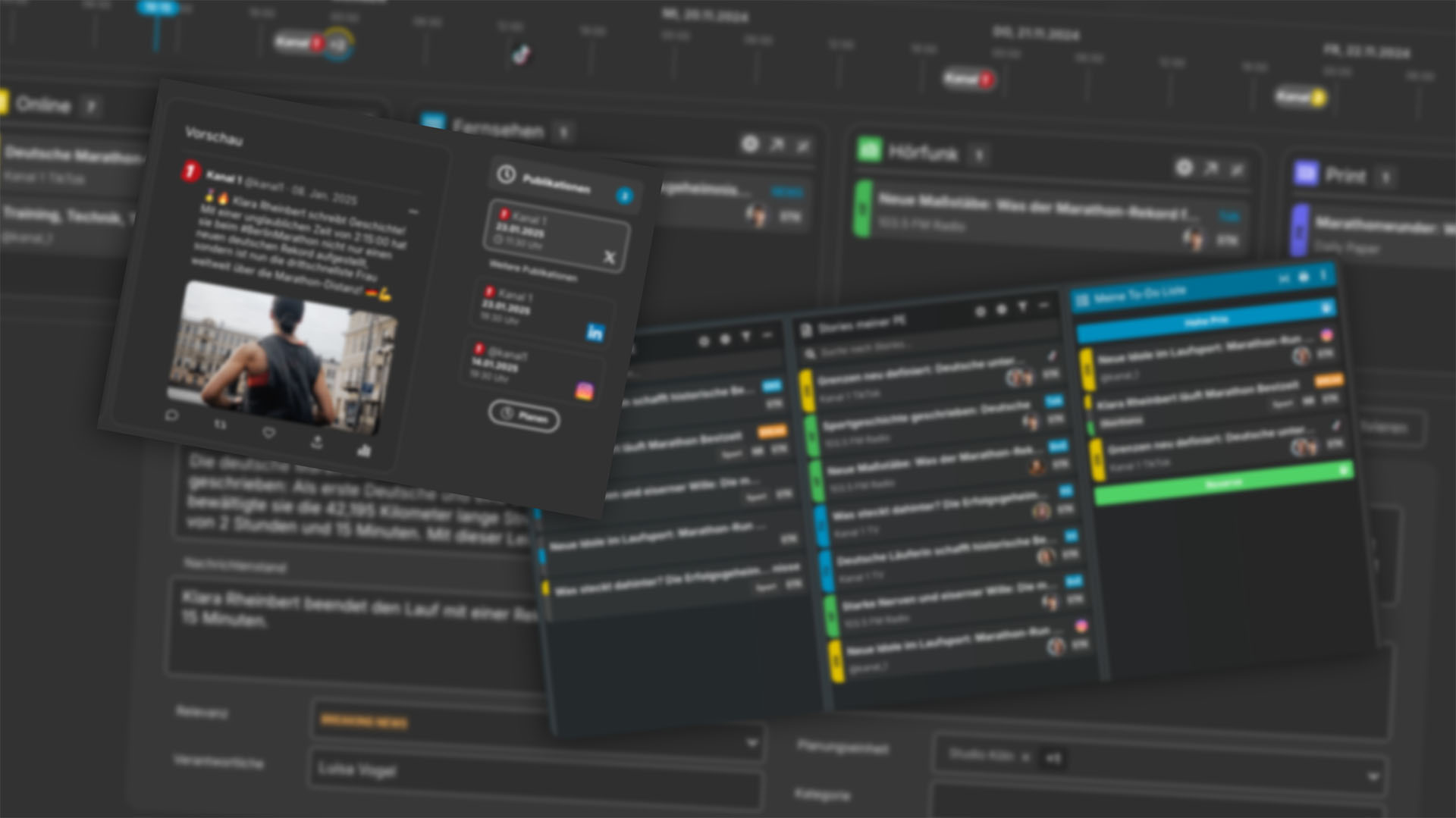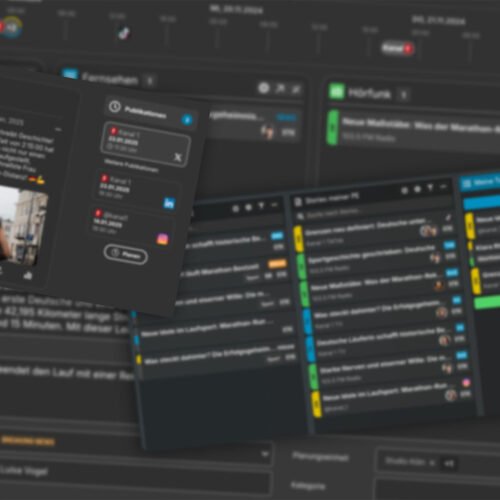Today, news and content are consumed, shared and created everywhere. The platforms on which content is published are just as diverse as the teams responsible for the content. To stay on top of things, media companies need a good content process. Traditional editorial teams with editors-in-chief, chief of staff or heads of department are therefore reorganising themselves more and more frequently with agile processes and topic teams in order to adapt to the decentralised, constantly changing news environment. But no matter how teams organise themselves and structure the content process: Everyone needs good planning, otherwise it will be chaotic and stressful.
A good content production process offers control
In order to meet the new requirements, media and broadcasting companies have adopted story-centred or topic-centred workflows. However, even these content processes must first be organised in a meaningful way in order to ensure clarity and control. So how can several people work on a product in a meaningful way?
For this, a single interface is needed that brings all assets and ideas together. Modern editorial systems such as Newsmind Stories support this process digitally. By bundling all content workflows in one place, editorial teams achieve greater transparency in content production and can ensure quality that resonates with users.
What does a topic-centred process look like in Newsmind Stories?
Here’s an example of a topic-centred workflow in Newsmind Stories:






At a glance: Which are must-have functions for topic-centred work?
No matter which system is in use, editorial teams must always be able to map this digitally in order to be able to work clearly and efficiently:
- Link content and visualise it in tickets: Overarching theme, topic, story
- Configure roles and planning units to develop content
- Visualise and organise production phases, for example in a Kanban: ideas, backlog, research phase, production, quality check, approval.
From the content idea to publication, the phases can of course look different in every media company or content team. What is important is that the individual workflows can also be mapped digitally. This means that editorial software or newsroom software must adapt to the processes and not the other way round. This is the only way for companies to work efficiently and satisfactorily.
How can editorial teams use Newsmind Stories to find topics faster and simplify research? With AI-based monitoring of trends and news.
More interesting articles that you shouldn’t miss



